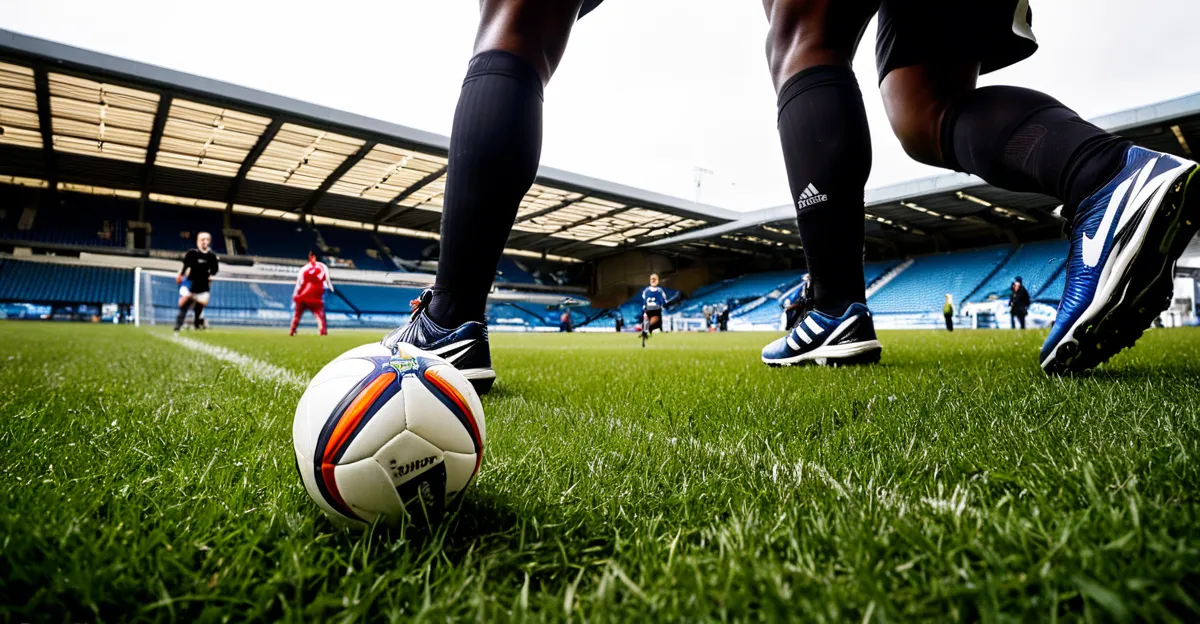The Importance of Grassroots Development in UK Sports
Grassroots sports development is crucial in shaping the future of UK sports, serving as the foundation upon which athletic success is built. These community sports programs play a significant role in nurturing talent at a young age. They actively engage local youth, providing them access to resources and opportunities that might not be available otherwise. Through youth engagement, children and teens can develop their skills while fostering a lifelong love for sport.
Community sports programs are instrumental in increasing participation rates, making sports more inclusive and accessible. They create an environment that encourages youth engagement and enhances social cohesion, which is vital for community building. By establishing strong local ties, these programs ensure that all demographics have the opportunity to participate, regardless of socio-economic background.
In parallel : How Can UK Sports Facilities Become More Sustainable?
The connection between grassroots participation and the development of elite athletes cannot be overstated. Many successful athletes attribute their achievements to the solid foundation laid through grassroots programs. Participating in these community-based initiatives allows young athletes to hone their skills, gain competitive experience, and receive mentorship, aligning with their professional aspirations. In this way, grassroots sports development serves as a pipeline for creating future champions while positively impacting community health and well-being.
Statistical Insights on Participation Rates
Understanding current sports participation statistics is pivotal in assessing the impact of grassroots sports on future talent pipelines across the UK. As of the latest reports, youth sports participation shows promising growth, with over 60% of children aged 5-12 engaging regularly in physical activities. However, demographic trends reveal disparities; participation rates are notably lower in certain socio-economic and ethnic groups, which raises concerns about inclusivity and access.
In parallel : How Has UK Sports Adapted to Technological Advancements?
Adult participation also follows a significant pattern, with approximately 40% of adults engaging in sports weekly, underlining the positive influence of community sports programs beyond youth engagement. These statistics emphasize the ripple effect of comprehensive grassroots programs which aim not only to foster youth talent but also to encourage lifelong participation in physical activities.
The implications of these participation rates on future talent pipelines are substantial. A broad base of participation is crucial for uncovering latent talent and ensuring a robust supply of future athletes. However, the existing disparities call for targeted strategies to bridge the engagement gap among underrepresented communities. Emphasizing inclusive policies and enhancing accessibility in all demographic sectors is essential for the sustained success of grassroots sports initiatives.
Success Stories from Grassroots Initiatives
Grassroots sports initiatives are the lifeblood of UK sports development, where many success stories begin. These programs not only cultivate talent but also positively impact communities. Through community sports programs, youth engagement is amplified, offering children and teens a chance to develop athletically and socially. Let’s delve into some inspiring examples.
Case Study: Local Football Clubs
Local football clubs are a beacon of success in grassroots sports development. They offer structured programs that focus on nurturing talent and increasing youth engagement. A prime example is the impact these clubs have on young athletes; not only do they hone skills on the field, but they also instill discipline and teamwork. Many notable athletes, such as Marcus Rashford, have risen through local club systems, demonstrating the significant role these community sports programs play in athlete development.
Case Study: Community Sports Hubs
Another success comes from community sports hubs that foster multiple sports disciplines. These hubs operate through collaboration between local authorities and sports organizations. By creating inclusive environments, they ensure diverse youth engagement. Participants and coaches frequently highlight how these hubs have broadened access to sports and provided essential resources that facilitate talent growth. Testimonials often recount transformative experiences that illustrate the pivotal role hubs play in inspiring future athletes.
Inspirational Athlete Journeys
The journey of athletes who have benefited from grassroots sports development is truly inspiring. Many athletes attribute their professional success to the foundational experiences gained in community sports programs. From learning the basics of their chosen sport to developing a competitive edge, their backgrounds in grassroots initiatives are integral to their careers. Profiles of these athletes frequently emphasize how these early experiences shaped not only their sporting abilities but also their personal growth and aspirations.
Challenges Facing Grassroots Sports Development
The development of grassroots sports in the UK is not without its challenges, particularly when it comes to securing funding. Many community sports programs operate on limited budgets, which hampers their ability to provide adequate facilities, coaching, and equipment. This financial strain often leads to a reliance on volunteers and donations, making it difficult to maintain a consistent and quality program.
Moreover, there are significant barriers to participation for underrepresented communities, which exacerbate sustainability issues. Factors such as socio-economic status, ethnic background, and location can limit access to grassroots sports opportunities. Programs may struggle to reach these communities due to lack of awareness, cultural considerations, or financial constraints.
To ensure the sustainability of grassroots programs, it’s essential to address these challenges head-on. This includes seeking alternative funding sources, such as grants from sports bodies or partnerships with local businesses. Additionally, creating targeted campaigns to raise awareness in underrepresented communities can help bridge the participation gap. By tackling these issues, grassroots sports initiatives can continue to thrive and nurture future generations of athletes.
Strategies for Enhancing Grassroots Efforts
Enhancing grassroots sports development requires a multi-faceted approach to ensure these vital community sports programs can continue to nurture talent and increase participation. Central to this effort is the development of innovative strategies that engage youth in meaningful ways. By implementing creative initiatives, communities can cultivate a deeper interest in sports among young people.
Community engagement is crucial to these strategies. By actively involving local youth, parents, and stakeholders in the planning and execution of sports programs, grassroots initiatives become more relevant and impactful. This can include organizing family-friendly events, employing local ambassadors to promote sports, or creating mentorship schemes that connect young athletes with successful sports figures from similar backgrounds.
Local sports policy plays a vital role in supporting these initiatives. Policies should focus on making sports accessible to all, irrespective of financial or social barriers. Local authorities can facilitate this by providing funding, infrastructure, and resources to grassroots programs in underrepresented areas. They can also work with schools to promote physical education as an integral part of the curriculum, ensuring all children have access to sport.
Engaging with stakeholders, such as local businesses and national sports bodies, is another effective strategy. By establishing partnerships, grassroots programs can secure additional funding and resources, while benefiting from the expertise and networks that stakeholders bring. It’s also important to encourage community sports programs to share their success stories, showcasing the positive impact of their work on youth engagement and community development.
Ultimately, to boost grassroots efforts, it is essential to foster a community-driven approach that prioritizes inclusion, accessibility, and enthusiasm for sports. By aligning efforts in these areas, grassroots sports can thrive, paving the way for future athletic success and community well-being.





